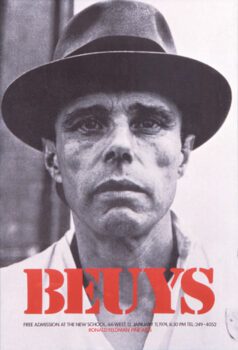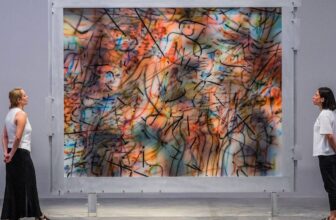Exploring the Life and Art of Joseph Beuys
Joseph Beuys (1921–1986) is one of the most influential and provocative artists of the 20th century. Revered and criticized in equal measure, Beuys challenged the very definition of art, expanding it into a vehicle for personal, political, ecological, and spiritual transformation. His life and work continue to inspire contemporary artists, thinkers, and cultural movements around the world. This story delves into his artistic philosophy, processes, materials, styles, and legacy, answering the essential questions about his fame, his artworks, and the value of his enduring contributions.
Who Was Joseph Beuys?
Born on May 12, 1921, in Krefeld, Germany, and raised in the nearby town of Kleve, Joseph Beuys emerged from the devastation of World War II with a radically new vision of art. His experiences as a Luftwaffe pilot during the war and the trauma of its aftermath deeply influenced his later work. According to a story he often recounted (though contested), after his plane crashed in Crimea in 1944, he was rescued by a group of nomadic Tatars who wrapped his wounded body in felt and animal fat to keep him alive, materials that would later become symbolic in his art.
Beuys went on to study at the Düsseldorf Academy of Fine Arts and became a professor there. However, his ideas about the democratization of art often clashed with the institution’s hierarchy, leading to his controversial dismissal in 1972. From that point on, Beuys immersed himself in political activism, teaching, and artistic production on a global scale.
What Was Joseph Beuys Known For?
Beuys was known not just as a visual artist but as a theorist, performance artist, and social activist. His concept of “social sculpture” is perhaps his most lasting contribution. Beuys believed that “everyone is an artist”, not necessarily in the sense of painting or sculpting, but in shaping society through creative thinking and action.
He became widely known for his performances (which he called “actions”), his installations, lectures, drawings, and assemblages of unconventional materials. Works like “How to Explain Pictures to a Dead Hare” (1965), where he cradled a dead hare while muttering explanations to it with his face covered in honey and gold leaf, demonstrated his mystical, often cryptic approach to communication and symbolism.
Beuys was a passionate advocate for humanism, ecology, and direct democracy, co-founding the German Green Party and initiating projects like the 7000 Oaks, a social sculpture involving the planting of thousands of trees as a statement of ecological and social renewal.
How Famous Is Joseph Beuys?
Joseph Beuys is regarded as one of the most important post-war artists in the world. His fame extends beyond the traditional art world due to his political activism, teachings, and intellectual legacy. Museums, galleries, and universities globally continue to reference and showcase his work.
He was featured in numerous major exhibitions during his lifetime and posthumously, including the Venice Biennale, Documenta in Kassel, and retrospectives at institutions like the Tate Modern in London and the Museum of Modern Art in New York. His influence can be seen in the practices of artists such as Marina Abramović, Damien Hirst, and Ai Weiwei, all of whom, like Beuys, use their work as a tool for social commentary and change.
In Germany, Beuys is something of a cultural icon. The centenary of his birth in 2021 was marked by over 100 exhibitions and events throughout the country, including the ambitious “beuys 2021” program. His face has appeared on postage stamps, and his ideas are discussed in philosophy, education, and political science departments, making him a cultural figure well beyond his medium.
How Does Joseph Beuys Make His Artwork?
Beuys’s artistic process was profoundly interdisciplinary and often participatory. He didn’t merely “make” artworks in the conventional sense; he crafted experiences, concepts, and provocations. He viewed the act of creation as a form of healing and transformation, both personal and societal.
His studio practice included drawing, sculpting, and assembling found objects into installations. However, a major component of his work was performance art, symbolic, ritualistic events where he often played a shamanic role. In these performances, he would use materials like felt, fat, honey, copper, and iron in metaphor-laden gestures meant to provoke deep reflection.
For example, in “I Like America and America Likes Me” (1974), Beuys spent three days in a room with a wild coyote in a New York gallery, wrapped in felt and interacting with the animal. The piece symbolized the reconciliation between European rationalism and Native American spirituality, as well as Beuys’s critique of American capitalism and militarism.
Even his installations were dynamic and imbued with a sense of performance. His “Fat Chair” (1964–85), a simple wooden chair with a block of fat on it, literally changes over time, sagging and melting, evoking themes of decay, transformation, and the body.
What Art Style Is Joseph Beuys Associated With?
Beuys defied traditional categorizations, but his work is most closely associated with:
Fluxus: An international and experimental art movement of the 1960s known for blending different artistic media and disciplines. While Beuys never officially joined the group, his ethos and practice aligned with Fluxus principles.
Conceptual Art: Where the idea behind the work takes precedence over the physical object.
Performance Art: Especially of the ritualistic, endurance-based, and symbolic variety.
Installation Art: Spatial environments that immerse the viewer, often with political or mystical themes.
Neo-Dada: Echoing Dada’s anti-art stance, Beuys used absurdity and irony to critique bourgeois society and politics.
Social Practice Art: He’s seen as a foundational figure in this field, using art to foster dialogue, activism, and community engagement.
In essence, Beuys was a philosopher-artist, his work was a synthesis of poetic metaphor, political theory, and pedagogical intent.
What Materials Does Joseph Beuys Use?
Beuys’s use of materials is one of his most distinctive artistic signatures. Each element he employed carried symbolic, spiritual, and practical meanings. His favored materials included:
Felt: Symbolizing warmth, protection, and insulation; connected to his wartime myth of rescue.
Fat: Representing transformation, energy, and sustenance. It appears in many of his works in raw, organic forms.
Honey: Associated with healing, labor (bees), and organic intelligence.
Copper and Iron: Conductive materials used to explore ideas of energy transfer and human connection.
Animal Parts: Such as bones, fur, or even blood, used in works that explored mortality, nature, and instinct.
Chalk and Blackboards: As tools for teaching and idea transmission, often reused during performances and lectures.
Everyday Objects: Chairs, coats, walking sticks, each chosen for its symbolic weight and resonance.
His use of these materials blurred the boundaries between art, science, myth, and alchemy. Beuys often spoke about these choices as part of a universal language, intuitive and primal.
How Many Artworks Does Joseph Beuys Have?
It’s difficult to pin down the exact number of artworks Joseph Beuys created due to the breadth and variety of his output. His body of work includes:
Hundreds of drawings and sketches, many of which were preparatory or conceptual.
Numerous “multiples”, affordable, editioned objects designed to make his art accessible to a broader public. There are over 500 known multiples.
Dozens of major installations and sculptures.
Over 70 documented performances (actions).
Various collaborative works, social sculptures, and lectures that defy traditional classification as “artworks.”
Institutions like the Joseph Beuys Estate, the Düsseldorf Art Academy, and the Staatliche Museen zu Berlin hold large collections, and his work is featured in many of the world’s most prestigious museums.
How Much Does Joseph Beuys’s Art Cost?
The market for Joseph Beuys’s art reflects his monumental status in modern art history. Prices vary widely depending on the medium:
Drawings and works on paper typically sell in the range of $20,000 to $200,000, depending on their significance.
Sculptures and installations can reach millions of dollars.
Multiples, such as objects made in limited editions, are more accessible and may range from $2,000 to $100,000.
Major performance documentation or rare artifacts from his actions are especially prized and can fetch significant sums at auction.
In 2016, Beuys’s work “Felt Suit”, one of his most famous multiples, sold at Christie’s for over $130,000. In 2023, a unique sculpture sold for nearly $2 million at Sotheby’s. These figures reflect not only monetary value but the ongoing relevance of his conceptual legacy.
Why Joseph Beuys Still Matters
Beuys’s work cannot be contained within gallery walls. His legacy is a living, breathing force that continues to animate movements for climate justice, political reform, and education. He was a teacher at heart, not just in the academic sense but in his belief that everyone had a role to play in shaping the world.
By asserting that “art is the only possibility for evolution,” Beuys elevated creativity from a profession to a universal human attribute. In today’s world, facing ecological collapse, social fragmentation, and political polarization, his message feels more urgent than ever.
Joseph Beuys was not simply an artist, he was a catalyst. Through radical materials, transformative performances, and a visionary approach to society, he reshaped what art could be. From felt and fat to oak trees and lectures, Beuys’s work transcended aesthetics and ventured into the terrain of the sacred, the communal, and the revolutionary.
His influence lives on, not just in museums but in classrooms, protests, and ecological projects worldwide. Whether you are an artist, a thinker, or an activist, Joseph Beuys invites you to consider a profound question: What if everything you do could be art?




